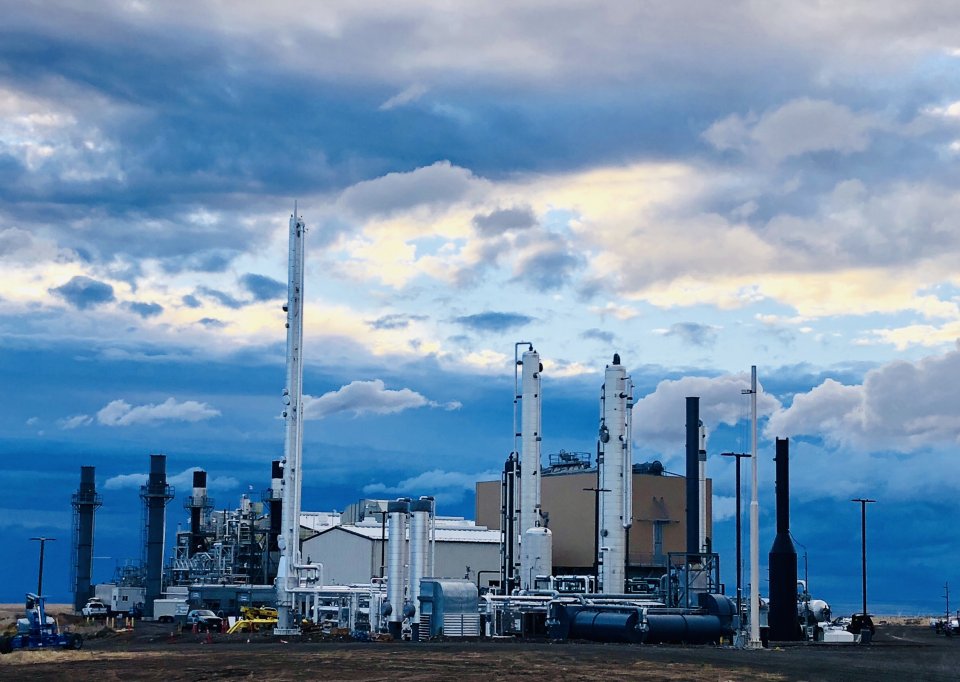Switch to Renewable Natural Gas
When landfill gas (LFG) volume is sufficient, but electricity generation is no longer feasible, switching to the production of renewable natural gas (RNG) may be a viable option. Several landfill or project owners have made this change, particularly given federal and state incentives for RNG along with a decrease in rates paid for renewable electricity in some areas of the country.
Criteria:
- For pipeline injection, generally must have a minimum LFG flow of 800 to 1,000 standard cubic feet per minute (scfm).
- For an onsite or nearby fueling station, need sufficient local fuel demand (e.g., waste fleet). This project type typically requires between 50 and 600 scfm LFG depending on the size of the fueling station.
Pros:
- Incentives related to vehicle fuel can provide a substantial source of revenue.
- More gas utilities are becoming interested in receiving RNG into their pipelines.
- Local air quality benefits from RNG-fueled vehicles displacing diesel use.
- Less emissions from LFG combustion at the project site.
Cons:
- Increased cost to clean LFG to standards needed for either pipeline injection or local vehicle fuel.
- For pipeline injection, fees and logistics related to interconnection add costs.
Economic Considerations:
- Typical capital costs for gas compression and treatment are $6,200 to $8,300 per scfm LFG.1
- Typical capital costs for pipeline are $600,000 for length less than 1 mile or $1,000,000 per mile for length 1 mile or more.1
- Interconnection fees vary by utility and connection point.
- Typical annual operation and maintenance (O&M) costs for a pipeline injection project is $1,200 to $1,400 per scfm LFG.1
- Onsite small-scale compressed natural gas (CNG) fueling stations range in cost from $3.28 per gallon gasoline equivalent (GGE) for 50 scfm LFG to $1.93/GGE for 600 scfm LFG.1
- Revenue under the federal Renewable Fuels Standard (through Renewable Identification Numbers or RINs) or state low-carbon transportation fuel programs. Often these incentives exceed the value of the RNG commodity.
- See average credit prices on the LCFS Credit Transfer Activity Reports page.
- See RIN prices on the RIN Trades and Price Information page.
More Information:
- An Overview of Renewable Natural Gas from Biogas, EPA LMOP
- LFG Energy Project Development Handbook Chapter 4. Project Economics and Financing, EPA LMOP
- Renewable Natural Gas, EPA LMOP
- Renewable Natural Gas Production, U.S. Department of Energy/Alternative Fuels Data Center
- About RNG, The Coalition for Renewable Natural Gas
- Turning Waste into Vehicle Fuel: Renewable Natural Gas (RNG): A Step-by-Step Guide for Communities, Energy Vision
References
1 U.S. EPA. Landfill Gas Energy Project Development Handbook. Chapter 4. Project Economics and Financing. July 2021. https://www.epa.gov/lmop/landfill-gas-energy-project-development-handbook.
2 U.S. EPA. LMOP Landfill and Landfill Gas Energy Project Database. July 2021. https://www.epa.gov/lmop/lmop-landfill-and-project-database.
3 Catchpole, Dan. Clearing Up. Trash-to-Gas From New RNG Plant Means Cash for Klickitat County PUD. October 4, 2019. https://www.newsdata.com/clearing_up/supply_and_demand/trash-to-gas-from-new-rng-plant-means-cash-for-klickitat-county-pud/article_ebc8f960-e6c9-11e9-9172-171a00e73fb1.html. Accessed December 17, 2021.
4 Public Utility District No. 1 of Klickitat County. H.W. Hill Renewable Natural Gas Project webpage. https://klickitatpud.org/about-us/landfill-project/. Accessed March 5, 2025.
5 Ricks, Kevin. Public Utility District No. 1 of Klickitat County. Email correspondence. October 20, 2021; July 6, 2023.

